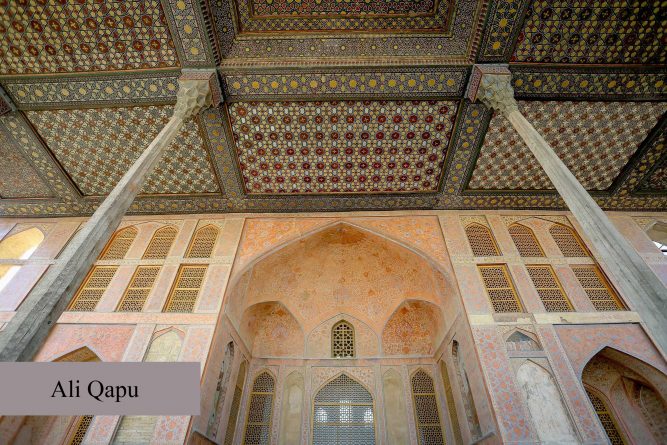
Ali Qapu
Ali Qapu edifice which was called “Dolat khaneh” (Government House) in Safavid era was built in 1598 on the west of Naghsh-e Jahan square across from Sheikh Lotfollah mosque.

It is decorated with amazing miniature and acoustic arts. It had 5 doors in the past which one of them is remained now. Ali Qapu is actually the name of the main door towards the Naghsh-e Jahan Square. It is 38 meters high and used to be a hub for hosting important officials of Iran and foreign governments.

The signification of Ali Qapu is from Turkish word of Qapu (door) and Persian word of Ali (Supreme). Ali Qapu,the same as what we can see in Ottoman Emperor, had a high dignity; in the way if a criminal could escape and settle there, nobody could arrest him unless in order of the king.
The amazing point about architecture of Ali Qapu is that; it has 2 floors from east view, 5 floors from west view and 7 floors from the king private staircase. There is a big terrace at the height of 28 meters with a copper pool in it. After entering the palace we will see a 64 sq m hall with a very beautiful dome above it full of Eslimi and Khotayi patterns. The acoustic masterpiece of this hall is that if you stand at one corner and whisper something, the person at across from corner can hear it easily and clearly.

There are 94 steps to the roof top, but there is a balcony in each floor that let people rest and watch the square view. At the toppest floor there is a big hall which was used for watching the polo games, fireworks, etc by king family or their guests. Another amazing amenity of this palace is music hall at 6th floor full of hollow plasters with form of musical instruments that not only give this place an astonishing beauty but also the acoustic effect.

